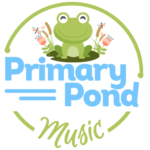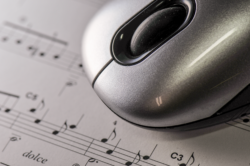When I was a student teacher, I did my practicum in a middle school. I learned a few techniques for getting the kids’ attention, but now that I’m teaching grade 2, I’ve had to create a whole new bag of tricks. I started with the “1 2 3 eyes on me” thing, but it didn’t work that well. Neither did the clapping thing. Even when I changed up the rhythms I clapped, the kids seemed deaf to it. This year, I tried some of the tricks I learned when I taught music last year, specifically, singing to get their attention. For the first part of the year, I tried a singing countdown, using the notes of the scale to count down from five to zero. The kids definitely could hear me better, but they didn’t respond as I’d hoped they would.
A few months ago, I watched a video about whole brain teaching. I had first heard about whole brain teaching while still a student teacher. I filed it in that corner of my brain labelled “things to use someday,” and forgot about it. Seeing this video reminded me how my colleague was really fired up about this method of teaching. So, I decided to start using some of these strategies in my classroom.
Typically, I find something I’m interested in and embrace it in its entirety. I get all gung-ho about something, start doing it, and then drop it. This time, I decided to take a small part and try it. Around 1:45 in the video, the teacher says, “Class,” and the children respond with “Yes.” I really liked how quickly the kids responded. I did a bit of research into this strategy, and began trying it in my class.
I have to admit: it works. Really works. Being a musician, I typically sing “Class” in a variety of ways, and my kiddos are getting very good at pitch matching (making the music teacher in me immensely pleased). I usually use So-Mi-Do patterns, but have been known to throw in a few jazz riffs from time to time. The key to this isn’t how I say class, or how the kids respond. It’s the score card on the board. Every time the kids respond quickly, they get a point in the “Smiley Face” column. When they’re not so prompt, they get a point beneath the sad face. More smiles than frowns by Friday, and we get to do something fun. This week’s goal is playing board games for the last hour of the day on Friday. I think next week, our goal will be a dance party!
On a side note: setting a goal with the kids on Monday morning also helps support my “Seven Habits of Happy Kids” lessons (Habit 2: Begin with the End in Mind. Have a Plan!” … but I digress… I’ll do another post on that later.
As I’ve seen some amazing success with this one little whole brain teaching tool, I’m beginning to think I’d like to adopt more of these strategies in my class next year. I think I know what I’ll be studying this summer!

 Technology in the Music Room
Technology in the Music Room
So, what do you think ?